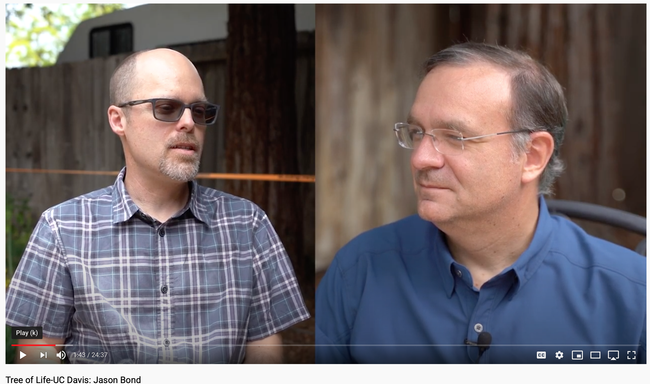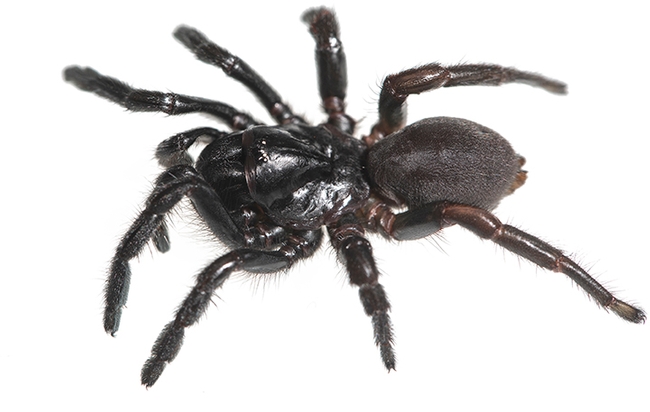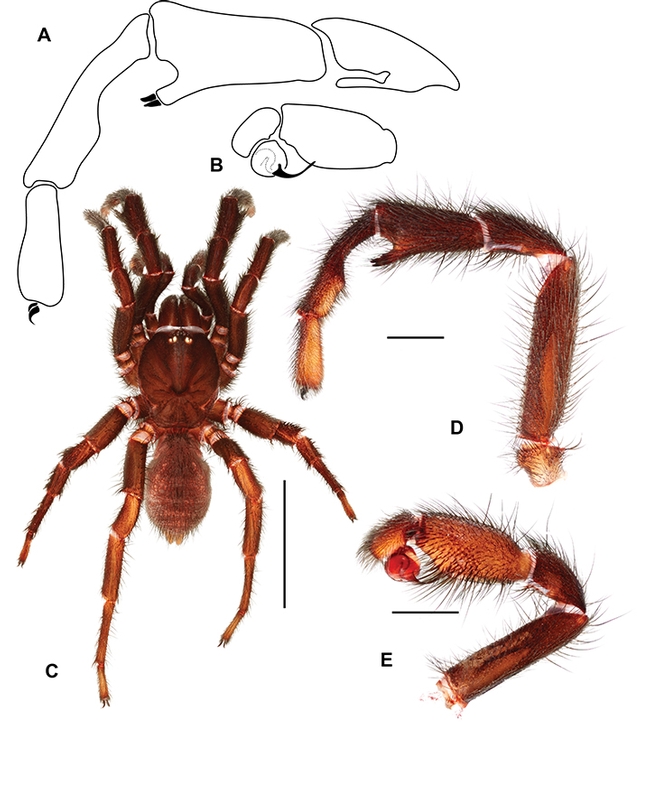UC Davis professor Jason Bond is seeking a species name for a new genus of trapdoor spiders he discovered on a sandy beach at Moss Landing State Park, Monterey County.
Bond proposes to name the genus, Cryptocteniza, part of which means “hidden or secret.” And the species name?
That's where you come in.
If your suggestion wins the competition, you will hold the bragging rights and be acknowledged in his upcoming manuscript on the new genus.
Bond, a noted spider authority and the Evert and Marion Schlinger Endowed Chair in Insect Systematics, UC Davis Department of Entomology and Nematology, is accepting suggestions until 5 p.m., June 1 at jbond@ucdavis.edu.
“It will stay that name forever,” said Bond, who related that spiders are often named for their physical characteristics, location or behavior--or for celebrities. He has named many a spider, singling out characters from Star Wars, as well as Depression era photographer Dorothea Lange, talk-show host Stephen Colbert, singer-songwriter Neil Young, and actress Angelina Jolie.
Bond and manuscript co-author Joel Ledford, assistant professor of teaching, UC Davis Department of Plant Biology, will select the winner. Ledford, whose research interests include spider systematics and biology education, interviewed Bond May 18 for his Tree of Life-UC Davis YouTube channel. It is online at https://www.youtube.com/watch?v=NV_eTablJMk.
“We don't want a public vote on the spider name,” in deference to the British polar research vessel that garnered a top public vote of “Boaty McBoatface” a few years ago, quipped Bond.
Trapdoor spiders are so named because they construct their burrows with a corklike or wafer trap door made of soil, vegetation and silk.
Bond discovered the female spider in 1997 on the sandy beach, and figured at the time it might be a new genus. But despite repeated trips to the site, he could not find a male for 22 years. The male proved elusive until pitfall trap sampling in the fall of 2019.
“I have only one male specimen,” Bond told Ledford. He said he will be “relieved” when it is described and finds a home in the Bohart Museum of Entomology, UC Davis.
“This genus meets the criteria of an endangered living fossil,” Bond said, “and is consequently of grave conservation concern.”
Bond believes the genus is found only in that area, but thinks it may be closely related to a genus found in New Mexico and Arizona. “It is quite plausible that this genus was once likely far more widespread across California and the American Southwest, with potentially greater past species diversity throughout its larger hypothetical ancestral range,” he said.
Of the genus name, Cryptocteniza, Bond says that the adjective “hidden or secret” is prefixed to Cteniza, the Greek feminine noun “comb.” The latter refers to the comb-like rastellum (row of stiff spines on the chelicera) common in taxa and formerly assigned to the spider family Ctenizidae (e.g., Eucteniza). The prefix refers to both the diminutive form of the rastellum and the seemingly “hidden in plain sight” nature of the genus, he says.
Bond credited Vera Opatova, a postdoctoral fellow in his lab, with helping to formulate the genus name.
It is rare to find a genus in the field, the professor said. The usual place is in museum collections.
The trapdoor spider family Euctenizidae is comprised of some 76 described species in seven genera widely distributed throughout the United States, although a few species are known from Mexico.
(Please send name suggestions to jbond@ucdavis.edu)
Attached Images:



